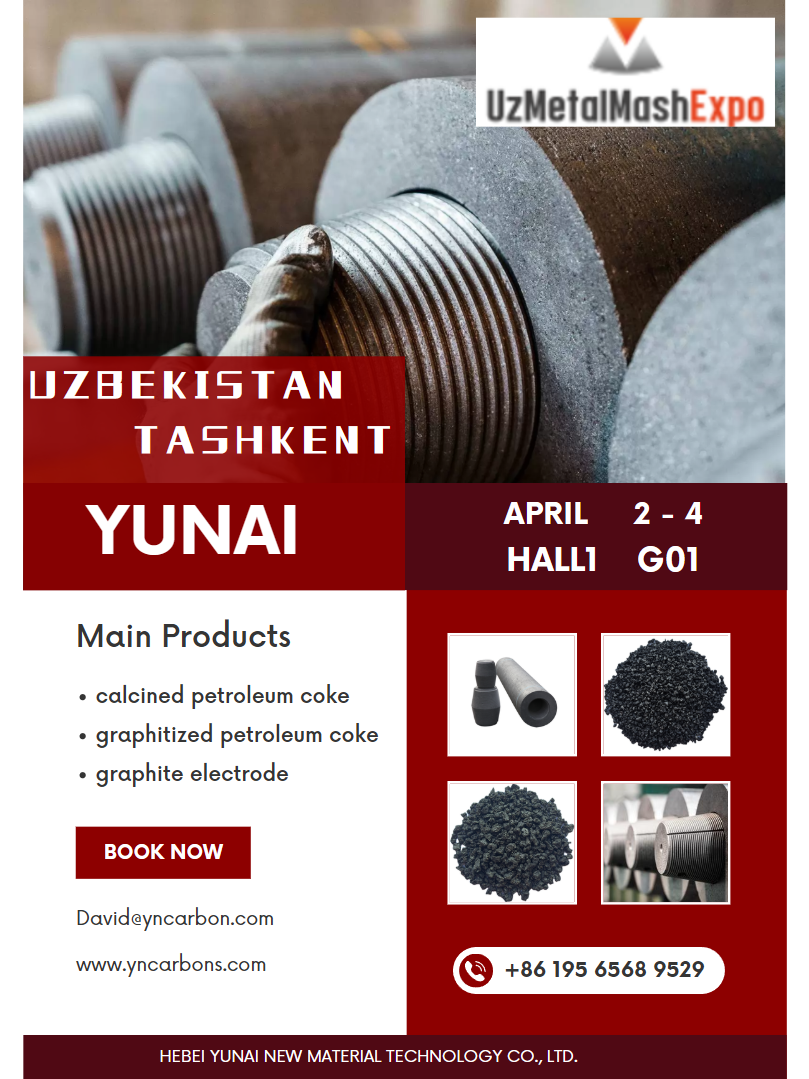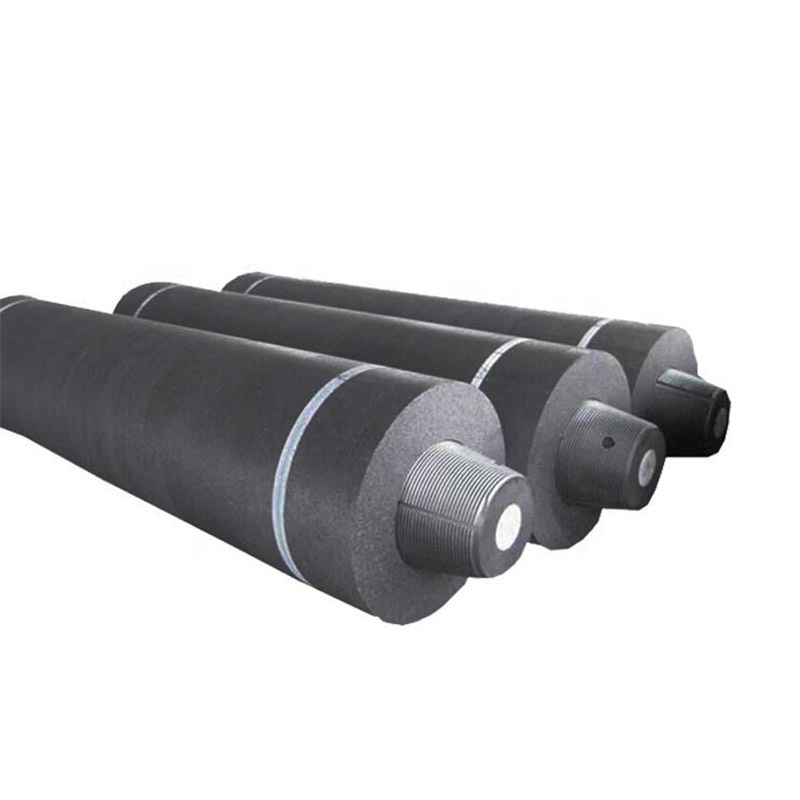Ultra High Power Graphite Electrodes: Enhancing Efficiency in Steel Production
Release Time:
Jun 26,2025
Ultra High Power Graphite Electrodes: Enhancing Efficiency in Steel Production In today's rapidly evolving industrial landscape, the demand for high-quality steel is ever-increasing. As we strive for enhanced production efficiency, one technology stands out: **Ultra High Power Graphite Electrodes (UHPGE)**. These innovative electrodes are crucial for the electric arc furnace (EAF) steelmaking proc

Ultra High Power Graphite Electrodes: Enhancing Efficiency in Steel Production
In today's rapidly evolving industrial landscape, the demand for high-quality steel is ever-increasing. As we strive for enhanced production efficiency, one technology stands out: **Ultra High Power Graphite Electrodes (UHPGE)**. These innovative electrodes are crucial for the electric arc furnace (EAF) steelmaking process, offering significant advantages in energy consumption, operational efficiency, and sustainability. In this article, we will delve into the transformative impact of UHP graphite electrodes on steel production, exploring their benefits, applications, and future trends.
Table of Contents
- Understanding Graphite Electrodes
- What Are Ultra High Power Graphite Electrodes?
- Advantages of Ultra High Power Graphite Electrodes
- Applications in Steel Production
- The Manufacturing Process of UHP Graphite Electrodes
- Sustainability and Environmental Impact
- Future Trends in Graphite Electrodes
- Frequently Asked Questions
- Conclusion
Understanding Graphite Electrodes
Graphite electrodes play a vital role in the electric arc furnace steelmaking process. They facilitate the transfer of electrical energy required to melt scrap steel and produce high-quality steel. Traditional graphite electrodes have been widely used in the industry for many years; however, the evolution towards **Ultra High Power Graphite Electrodes** has brought about a new era of efficiency and performance.
Composition of Graphite Electrodes
Graphite electrodes are primarily composed of carbon, which is derived from petroleum coke, needle coke, and other carbonaceous materials. The purity and structure of these materials significantly influence the performance of the electrodes. The manufacturing process involves a series of steps, including baking, graphitization, and machining, which ensure the electrodes are capable of withstanding high temperatures and facilitating efficient energy transfer.
What Are Ultra High Power Graphite Electrodes?
Ultra High Power Graphite Electrodes are a specialized type of electrode designed to operate at higher power ratings than standard electrodes. These electrodes are engineered to handle increased electrical current, which in turn enhances the melting efficiency of steel in EAFs. UHP graphite electrodes offer superior thermal conductivity and mechanical strength, making them indispensable in the steel production process.
Characteristics of UHP Graphite Electrodes
UHP graphite electrodes are characterized by:
- **High Graphite Density:** This feature enhances electrical conductivity and thermal stability.
- **Lower Electrical Resistance:** Reduced resistance leads to more efficient energy transfer.
- **Enhanced Thermal Conductivity:** Improved heat dissipation prevents overheating.
- **Mechanical Strength:** UHP electrodes are more robust, reducing breakage and downtime during production.
Advantages of Ultra High Power Graphite Electrodes
The advantages of UHP graphite electrodes are substantial, particularly in improving efficiency and reducing operational costs in steel production. Here are some key benefits:
1. Improved Energy Efficiency
One of the primary benefits of using UHP graphite electrodes is **enhanced energy efficiency**. The lower electrical resistance of these electrodes allows for a more effective energy transfer, resulting in reduced energy consumption during the melting process. This translates to cost savings for steel manufacturers and a smaller carbon footprint.
2. Higher Productivity
UHP graphite electrodes enable faster melting times, which increases **overall productivity** in steel production. By optimizing the melting process, manufacturers can produce more steel in less time, meeting the growing demand for steel products without compromising quality.
3. Enhanced Quality of Steel
Steel produced using UHP graphite electrodes exhibits improved metallurgical properties, including better **homogeneity** and reduced inclusions. The efficient melting process ensures that the final product meets stringent quality standards, essential for various applications in construction, automotive, and other industries.
4. Reduced Electrode Consumption
Due to their superior mechanical properties and performance, UHP graphite electrodes experience less wear and tear compared to traditional electrodes. This leads to **lower electrode consumption**, ultimately reducing operational costs associated with electrode replacement.
5. Environmental Benefits
The use of UHP graphite electrodes contributes to **sustainable steel production**. The increased energy efficiency and reduced emissions align with global efforts to minimize the environmental impact of industrial processes. Furthermore, the ability to melt scrap steel more effectively promotes recycling and the circular economy.
Applications in Steel Production
Ultra High Power Graphite Electrodes are predominantly used in electric arc furnaces for steelmaking. Their unique properties make them suitable for various applications within this domain:
1. Scrap Steel Melting
UHP graphite electrodes are essential in the melting of scrap steel, a critical process for producing new steel products. Their capacity to handle high power levels ensures that scrap is melted quickly and efficiently, facilitating a seamless production cycle.
2. Secondary Steelmaking
In secondary steelmaking, UHP graphite electrodes are employed to refine the molten steel and adjust its chemical composition. This step is crucial for achieving desired quality specifications, such as hardness and tensile strength.
3. Foundries
Foundries utilize UHP graphite electrodes in the casting process, where molten metal is poured into molds. The electrodes help maintain the necessary temperature and fluidity of the metal, ensuring quality cast products.
4. Other Metallurgical Processes
Beyond steel production, UHP graphite electrodes find applications in various metallurgical processes, including non-ferrous metal smelting and recycling, showcasing their versatility in the industry.
The Manufacturing Process of UHP Graphite Electrodes
The manufacturing of UHP graphite electrodes involves several critical steps that ensure the final product meets industry standards. Here’s a detailed overview of the process:
1. Raw Material Selection
The quality of UHP graphite electrodes begins with the selection of high-quality raw materials. Petroleum coke and needle coke are the primary components, chosen for their purity and carbon content.
2. Mixing and Forming
The selected raw materials are mixed with binders and additives to achieve the desired consistency. The mixture is then formed into cylindrical shapes under high pressure, creating the base of the electrodes.
3. Baking
The formed electrodes undergo a baking process in a furnace at high temperatures. This step removes volatile components and initiates the carbonization process, which enhances the material's properties.
4. Graphitization
Following baking, the electrodes are subjected to graphitization, where they are heated to temperatures exceeding 2,500°C. This process transforms the carbon structure, resulting in enhanced electrical conductivity and thermal stability.
5. Machining
The final step involves machining the electrodes to precise dimensions. This ensures they fit correctly in the electric arc furnace and perform optimally during the steel production process.
Sustainability and Environmental Impact
The steel industry faces increasing pressure to adopt sustainable practices, and UHP graphite electrodes play a pivotal role in this transition. Their advantages contribute significantly to reducing the industry's environmental footprint:
1. Energy Conservation
By enhancing energy efficiency, UHP graphite electrodes help lower the overall energy consumption in steel production. This reduction in energy demands translates to fewer greenhouse gas emissions associated with electricity generation.
2. Waste Reduction
The durability and efficiency of UHP electrodes lead to less waste through reduced electrode consumption and longer service life. Furthermore, the effective melting of scrap steel promotes recycling, contributing to a circular economy.
3. Cleaner Production Processes
Utilizing UHP graphite electrodes minimizes the release of harmful pollutants during the steelmaking process. This cleaner production approach aligns with global environmental standards and supports industries in achieving their sustainability goals.
Future Trends in Graphite Electrodes
The graphite electrode market is poised for continued innovation and growth, driven by advancements in technology and evolving industry needs. Some notable trends include:
1. Advanced Materials
Research is underway to explore new materials and composites that can further enhance the performance of graphite electrodes. Innovations in material science may lead to the development of even more efficient and sustainable electrodes.
2. Automation and Smart Manufacturing
As industries embrace automation and smart manufacturing techniques, the production of UHP graphite electrodes will likely benefit from increased efficiency and reduced costs. Implementing data analytics and machine learning can optimize manufacturing processes.
3. Increased Demand for Steel
The growing demand for steel in construction, automotive, and renewable energy sectors will drive the need for UHP graphite electrodes. Steel manufacturers are expected to invest in advanced technologies to meet this demand while maintaining efficiency and sustainability.
4. Regulatory Changes
Regulatory frameworks aimed at reducing carbon emissions and promoting sustainable practices will shape the future of the graphite electrode industry. Companies will need to adapt to these changes by adopting innovative technologies and processes.
Frequently Asked Questions
1. What are the primary advantages of Ultra High Power Graphite Electrodes?
The primary advantages of UHP graphite electrodes include improved energy efficiency, higher productivity, enhanced steel quality, reduced electrode consumption, and environmental benefits.
2. How do UHP graphite electrodes impact the steel production process?
UHP graphite electrodes facilitate efficient melting of scrap steel, reduce energy consumption, and enable faster production cycles, ultimately improving the overall steel production process.
3. What materials are used to manufacture UHP graphite electrodes?
UHP graphite electrodes are primarily made from petroleum coke and needle coke, combined with binders and additives to achieve the desired properties.
4. How does the use of UHP graphite electrodes contribute to sustainability?
UHP graphite electrodes enhance energy efficiency and reduce emissions during steel production, while also promoting recycling and minimizing waste.
5. What future trends can we expect in the graphite electrode market?
Future trends include the development of advanced materials, increased automation in manufacturing, growing demand for steel, and regulatory changes promoting sustainability.
Conclusion
Ultra High Power Graphite Electrodes are revolutionizing the steel production landscape, offering significant advantages in efficiency, quality, and sustainability. As the industry continues to evolve, the adoption of UHP graphite electrodes will play a crucial role in meeting the growing demand for steel while minimizing environmental impacts. Embracing these innovative technologies positions manufacturers at the forefront of a competitive market, ensuring they can deliver high-quality products in a sustainable manner. The future of steel production is bright, and UHP graphite electrodes are a key component of that future.
Keywords:
More information









